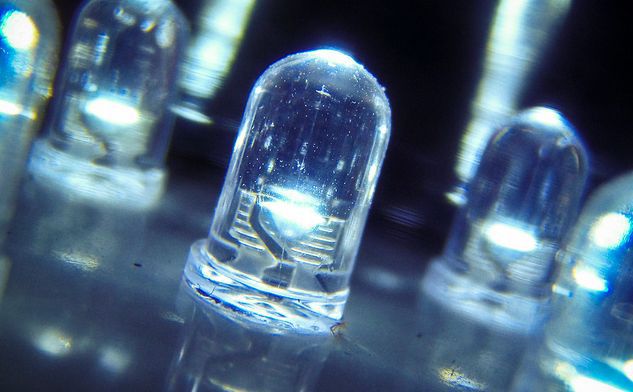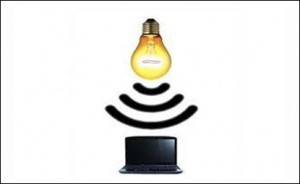Underwater wireless "Internet"
- Transfer

Many of us use Wi-Fi daily, but who has heard of his “relative,” Li-Fi? Today, the US Navy is financing the development of underwater data transmission technology based on the principle of high-frequency light pulses. And the work published in Nature Nanotechnology may well help to realize this technology. The authors of the article made artificial material that reacts unusually to light. Due to this property, it is possible to create high-speed light data transmitters.
The principle of operation of Li-Fi resembles Morse code. LED flashes correspond to logical ones and zeros. The sequence of light pulses received by the optical receiver is converted into a digital signal. The speed of the flashes is such that the human eye is not able to distinguish it, and the higher the speed, the greater the throughput of such a transmission channel.

Mentioned artificial material can increase the frequency of LED flashes by one or two orders of magnitude. “You can use very cheap LEDs and increase the speed by 50 times,” says Zhaowei Liu, an optical engineer at the University of California, author of the article. It would also be possible to initially use faster LEDs and increase the frequency to a similar degree.
Li-Fi can be used for specific tasks, for example, to improve the communication quality of submarines, since radio waves propagate poorly in the water column, and acoustic data transfer technologies do not provide too high speed. Also, Li-Fi can be useful in petrochemical enterprises and in aviation, where the use of Wi-Fi leads to the appearance of interference in the equipment.
There is another possible area of application of promising technology. The US Federal Communications Commission has warned that the range of available frequencies for wireless communications is becoming too "crowded." Li-Fi can reduce the number of frequencies used today. The optical spectrum is approximately 10,000 times wider than the radio frequency spectrum, and can accommodate much more data transmission channels. In addition, visible light does not interfere with radio waves in any way, which allows Wi-Fi and Li-Fi to work simultaneously. It will also be possible to switch from one to another, similar to hybrid cars. Also, Li-Fi can be integrated into an existing infrastructure of external and internal lighting.

The highest data rate through a single LED, achieved in the laboratory, is3.5 gigabits per second over a distance of 5 cm. This is still less than the record for transmission speed through the 237 GHz radio channel, which is 100 gigabits per second , but there is potential for further growth.
At longer distances and in the field, the transfer rate through Li-Fi is lower. For example, specialists from the Heinrich Hertz Institute in Germany reached speeds of 500 megabits / sec at a distance of 1 to 2 m, and 100 megabits / sec at a distance of over 20 m.
Liu and colleagues plan to increase throughput by introducing “hyperbolic metamaterial” into LEDs. This substance consists of several alternating 10-nm layers of silicon and silver. Sandwiches with a thickness of 305 nm are placed on a glass substrate, with grooves cut out in each layer. Next, the stack of layers is covered with transparent plastic with the addition of rhodamine dye molecules. These molecules fluoresce upon absorption of light. The researchers irradiated them with a laser and measured the brightness and frequency of flicker during fluorescence, noting multiple growth.

“This study demonstrates the great potential of the invented material,” said Zubin Jacob, an engineer from the University of Alberta. Hyperbolic metamaterials have unusual properties due to the applied patterns, whose size is less than the length of light in the range from 400 to 700 nm. When light falls on such a material, the so-called plasmon resonance occurs, in which the electrons begin to oscillate at the same frequency with the material. A similar property does not occur in nature. When plasmon resonance coincides with fluorescent radiation, the latter can be amplified, which leads to an increase in brightness and flicker speed.
German researchers say they can help US colleagues bring Li-Fi to commercial use. The standard LEDs available today are optimized for lighting, and not for data transmission, so you can change their parameters in a relatively small range. So new material can be an excellent solution in this matter.
